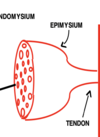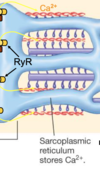Q2-MB6/Muscle Structure and Contraction Flashcards
what are the 3 types of muscle
skeletal smooth cardiac
what is the most abundant type of muscle found in body?
skeletal
where is smooth muscle mostly found?
in the linings of organs such as blood vesssels, stomach, and intestines
2 classification systems of muscles
appearance and innervation
2 sub classes of appearnace of muscles
striated and unstriated
2 types of innervation
voluntary and involuntary
what is the endomysium
surrounded muscle fiber
what does smooth muscle control?
it controls the movement of contents of the organ
which types of muscles are unstriated?

which types of muscles are striated?

which types of muscles are voluntary?

which types of muscles are involuntary?

what is the endomysium?
it is a connective tissue sheath that surrounds skeletal muscle cells

what is a group of skeletal muscle cells called?
fasicle

what is the lining that surrounds a fascicle?
perimysium

what is a group of fascicles called?
a muscle
what is a muscle surrounded by?
the epimysium

label this diagram


what type of structure do muscle fibers have?
multinucleate, syncytial

A sarcomere starts and ends at what?
starts at the z line and ends at the next z line

what is the I band bisected by?
the Z line
what is the H zone bisect?
the A band
What does the M line bisect?
the H zone
What is the M line and what is it made out of?
the M line is the middle line and it is made out of proteins called myomesin





















